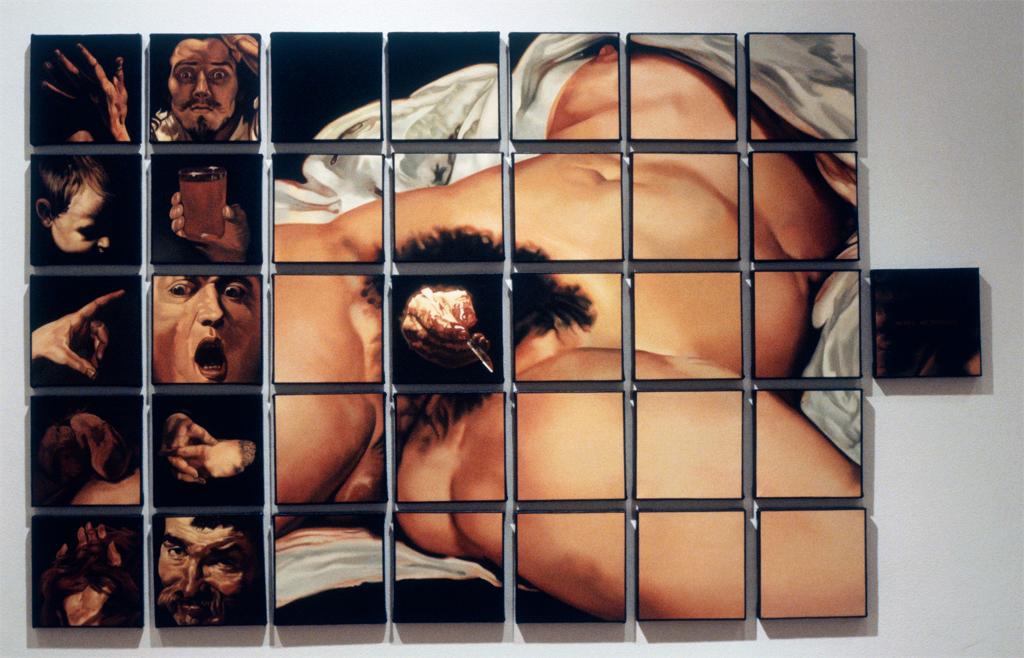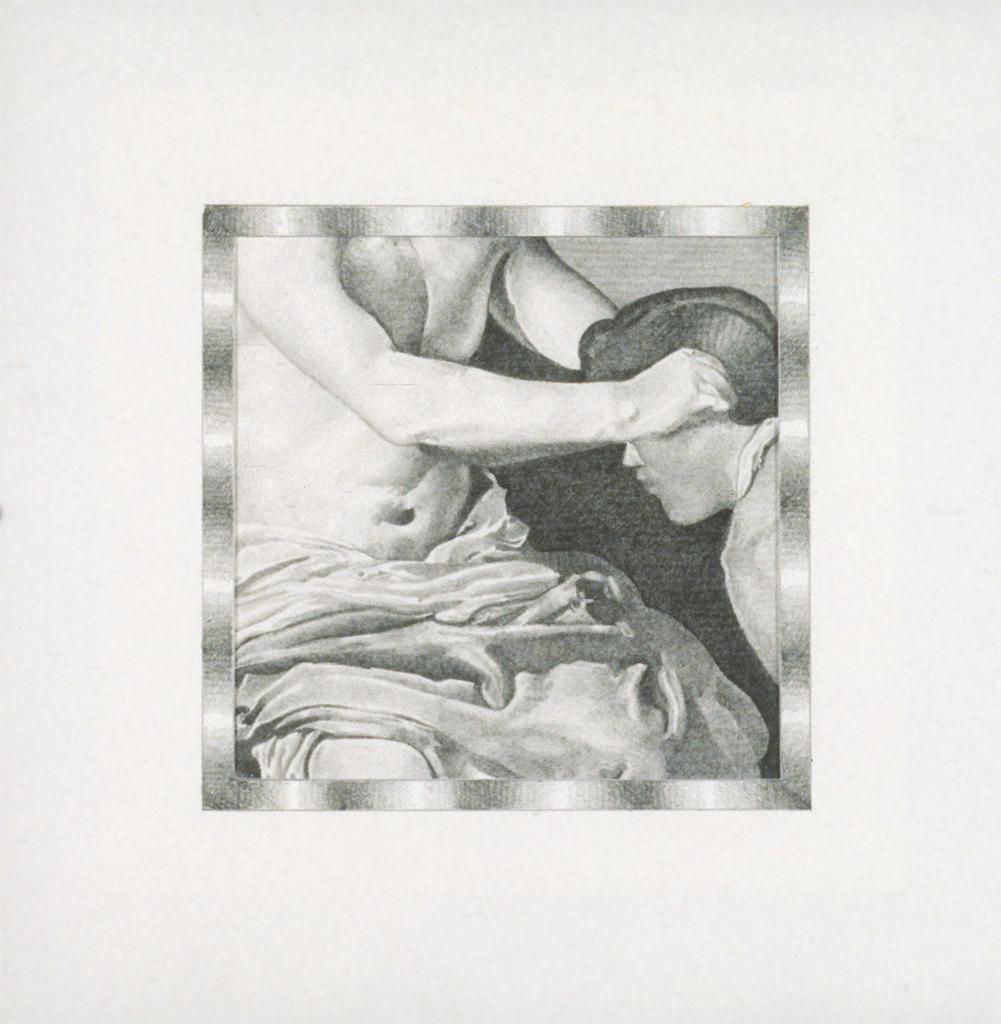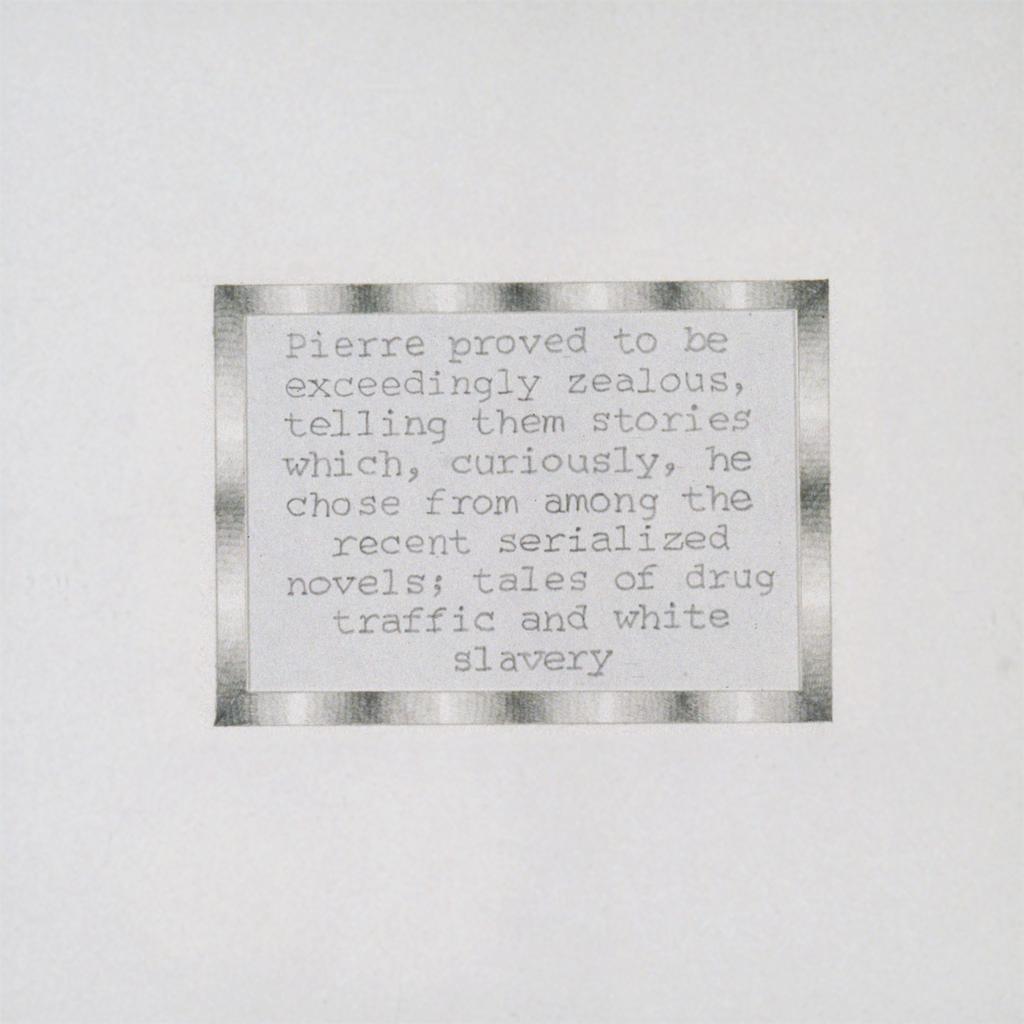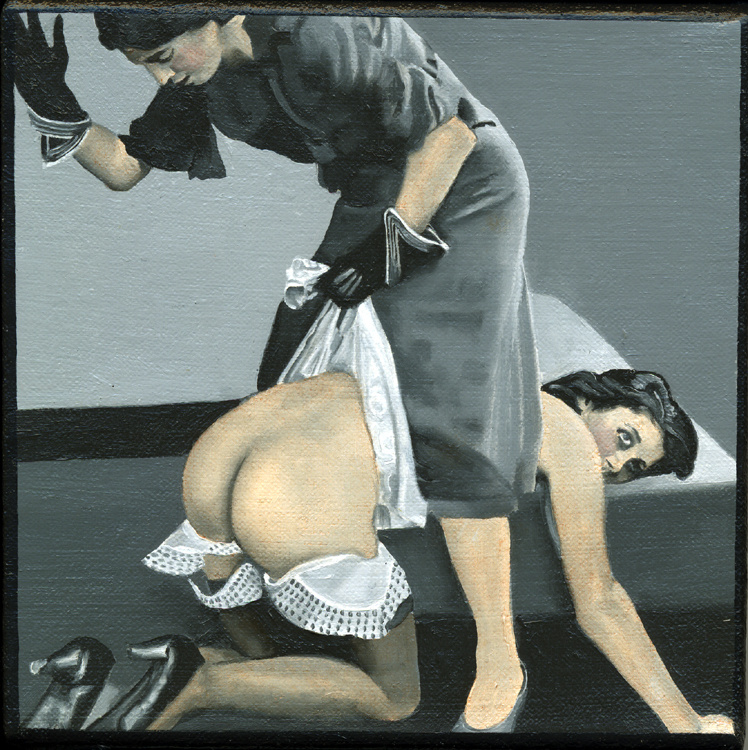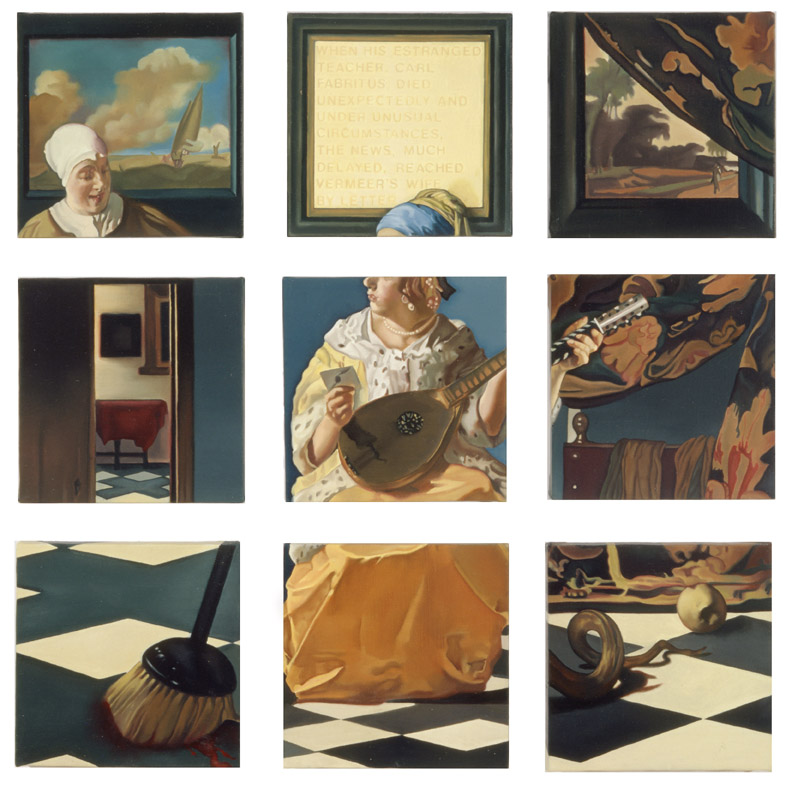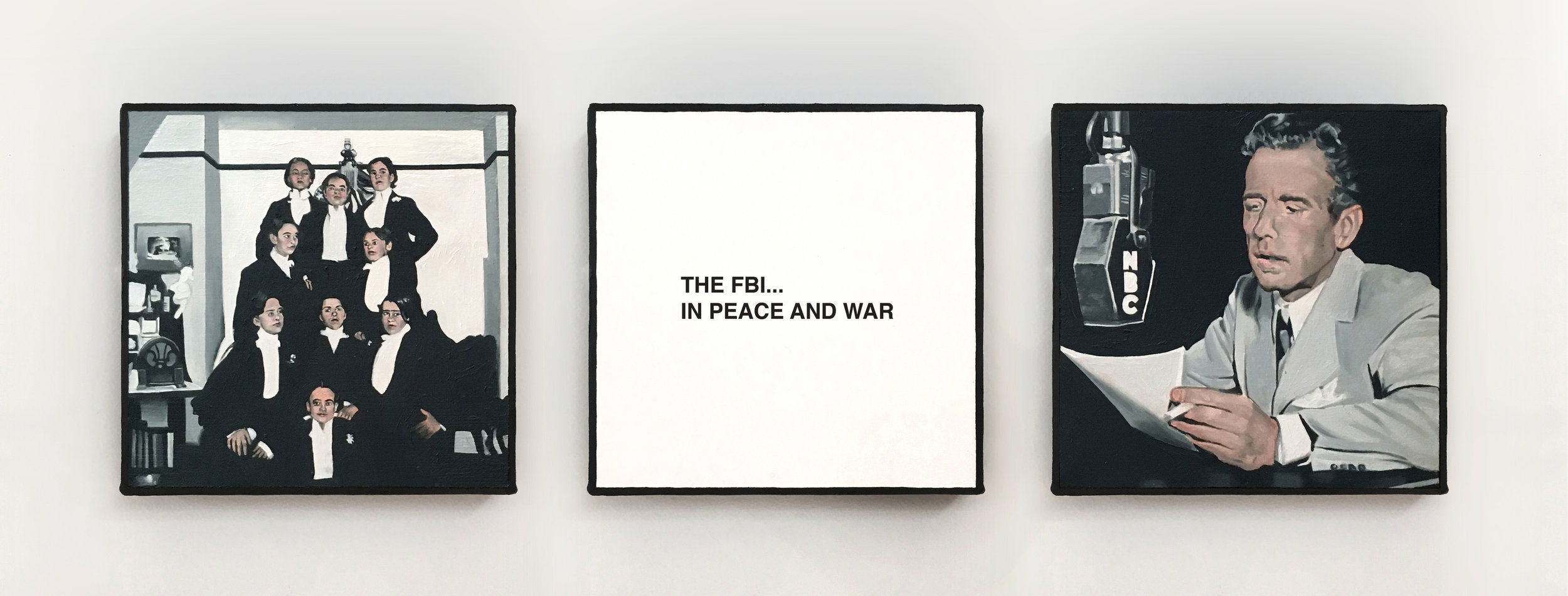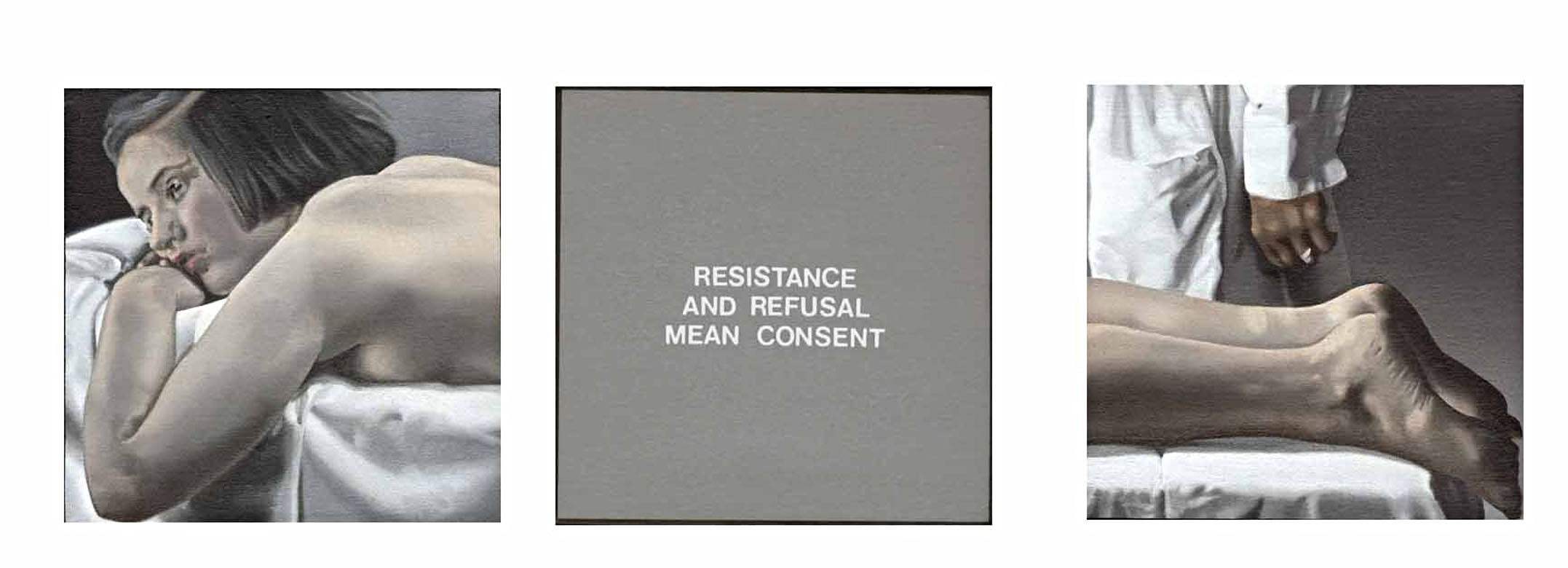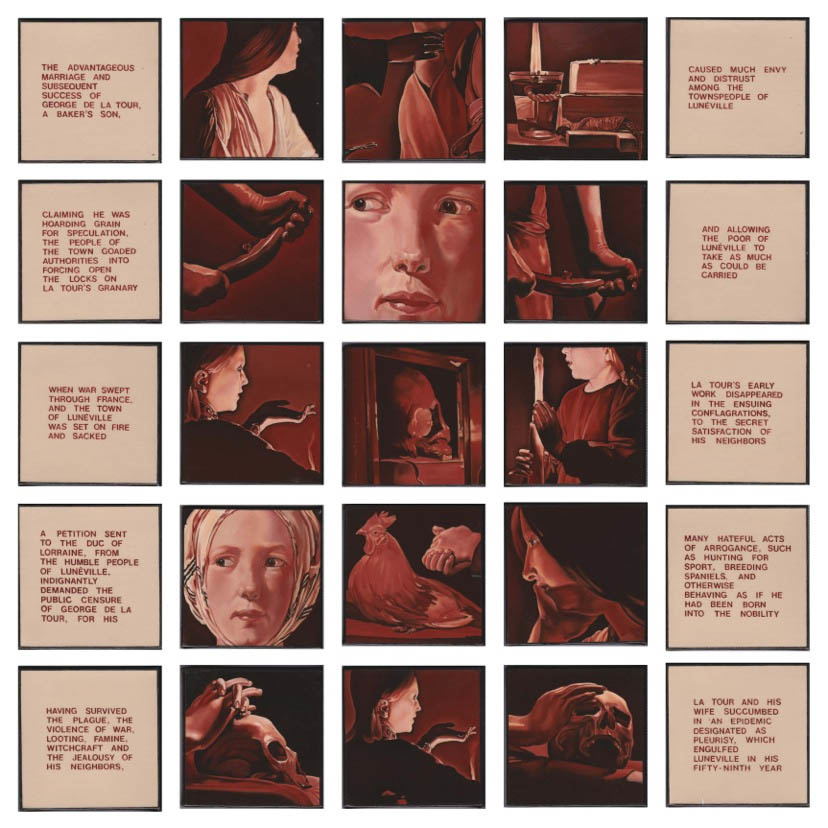“Making art is a way of life for just about everyone who does it… It may seem contradictory for someone who takes images and often text from other sources to feel her work is completely personal, but in fact, I do.”
Dotty Attie’s art practice developed through her appropriation and recontextualization of venerated eighteenth- and nineteenth-century artworks as a means of self-exploration. Attie takes works from old masters such as Vermeer, Caravaggio, and Ingres, copies fragments of them with a careful hand, and repositions them to illustrate hyper-focused narratives of an individual. The deliberate deconstruction involved in this practice features prominently throughout Attie’s work. One such work, Vermeer’s Wife, consists of multiple Vermeer portraits that Attie reproduced, separated into nine neat squares, and rearranged into a gridlike format to form a unique image. Text in the middle square of the top row describes the action that occurs in Vermeer’s painting, The Love Letter. Attie’s painting, though also comprised of details from Vermeer’s Allegory of the Catholic Faith and Girl With a Pearl Earring, is primarily modeled after the scene in The Love Letter, wherein a woman in yellow is seated holding a guitar in one hand and a letter in the other, staring disconcertedly at the maid standing to her right. In Attie’s version, the woman’s eyes are absent. Her body is split apart, condensed, and surrounded by a series of vaguely threatening instances: a broom sweeping up blood; a coiled snake tail; a fallen apple; a slightly opened doorway. Arranged into disparate parts, Vermeer’s Wife reveals the constraints and nuanced violence that women frequently experience.
Attie’s more recent work explores similar themes taken from popular media. The Lone Ranger series, for example, utilizes depictions of the iconic television character to examine masculine identities and the fantasies they evoke. Inspired by masked figures of all types, Attie explores the notion of what it means to be an American icon. Many of her figures--some masked, some not, and nearly all white-skinned and shaded in an eerily pale glow characteristic of grisaille painting--are situated in explicitly violent or erotic scenarios. In one square canvas, a woman is on her hands and knees receiving a spanking from another woman; in another, much larger work consisting of twenty-five 3 x 4 inch square panels, portraits of several nude and leather-clad women are interspersed amongst cowboys, businessman, and even a baby teething the barrel of a handgun. Attie also includes multiple portraits of robed Klu Klux Klan members. The character of the Lone Ranger is simply a jumping off point for a deeper dive into a darker side of Americana sentimentality. By harnessing the power of the subliminal through disjointed imagery, Attie lends an elusive quality to her work that serves to confront the viewer with surprising intimacy.
In an interview with her son, Eli, for Interview Magazine, Dotty Attie explains how there is a deeply personal attachment to her Lone Ranger series. “My work is really all about our secret selves,” she says, “the parts of our selves that we don’t really share with anybody else.” Attie emphasizes the psychological element present in The Lone Ranger, and how her work is mostly about her “own fantasy life” rather than the character himself.
An active member of A.I.R. up until 1986, Attie helped choose the organization’s initial location, assisted in recruiting members, and worked to maintain the space. Her solo show at the gallery in 1972 introduced her work to the world, and by 1978 Attie had already been featured in shows in Paris, Japan, and Germany. Attie has received several awards and grants for her work, including the Creative Artists Public Service grant from the New York State Council on the Arts in 1973 and 1976, and the National Endowment for the Arts grant in both 1975 and 1983.
Dotty Attie works primarily in New York, though she has exhibited in both group and solo exhibitions worldwide. She was born in 1938 in Pennsauken, New Jersey, and received her BFA from the Philadelphia College of Art.
member 1972-88 | b. 1938 | New York, NY
+ Select Exhibitions
Dotty Attie: The Lone Ranger, 2013, PPOW Gallery
MATRIX 63: Dotty Attie, 1980-81, Wadsworth Atheneum
Dotty Attie: Drawings 1975-1979, 1979, Contemporary Arts Museum Houston
+ Selected Press
The Museum of Non-Visible Art, Yale University Radio (2015) - Interview with Dotty Attie
Artforum (2014) - Dotty Attie P.P.O.W.
Interview Magazine (2013) - Ranger Games: Dotty x Eli Attie
HuffPost (2013) - Artist Explores The Alter Egos Of Pop Culture’s Most Famed Masked Men (NSFW)
The New York Times (1987) - '10 Major Women Artists' In West Nyack
The New York Times (1984) - The Potato Takes Center Stage at Pace University's Gallery
The New York Times (1981) - Complex Works Shown at Atheneum
+ Publications
P.P.O.W. (2018) - Dotty Attie
Arts Magazine (1978) - Dotty Attie
+ Collections
Brooklyn Museum
Museum of Modern Art
Smithsonian American Art Museum
P.P.O.W. Gallery
Whitney Museum of American Art
Mead Art Museum at Amherst College
Smith College Museum of Art
University Museum of Contemporary Art at UMASS Amherst
Susan L. Halper Fine Art, Inc.
